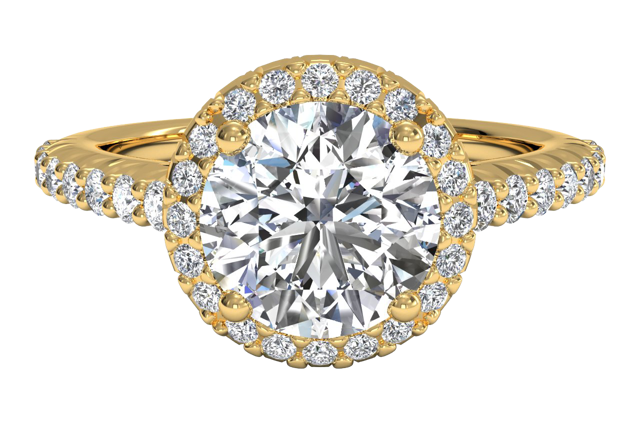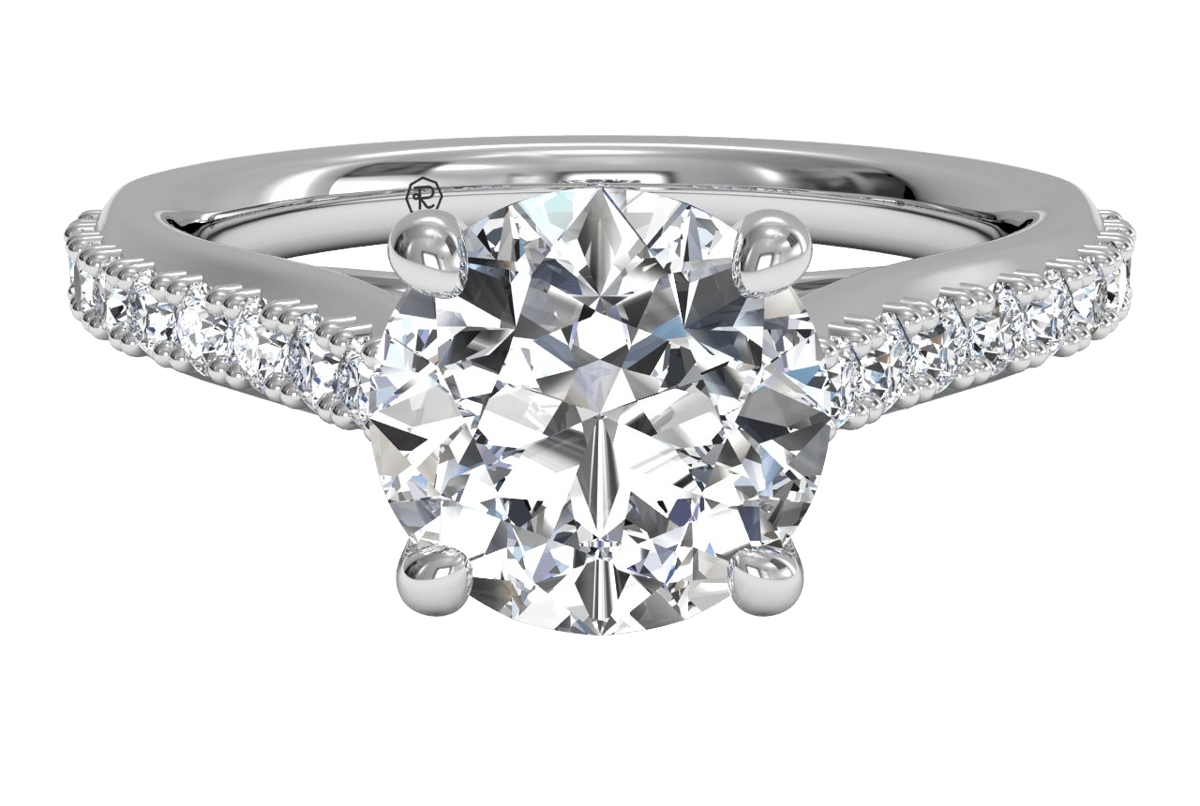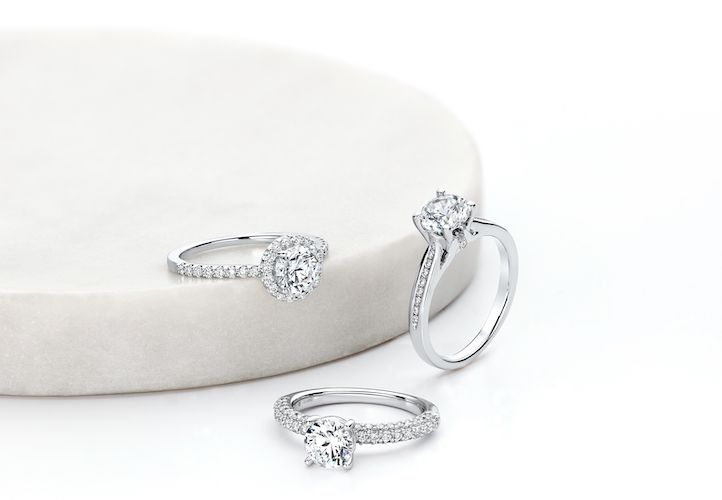White Gold Engagement Rings: How and Where to Buy Them
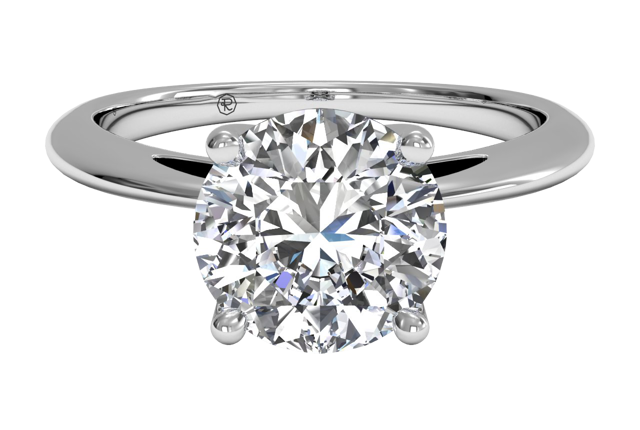
By far, white gold has become the most popular metal choice for engagement rings since its introduction in the 1920s. It has a beautiful cool tone that pairs perfectly with diamonds, is more resistant to scratches than yellow gold, and is more affordable than platinum. It’s easy to see why white gold is number one.
Although widely known and requested, white gold still poses many questions; from its composition to its durability, brides want to understand what makes this metal the right choice for their rings. If you have ever wondered about the attributes and benefits of this beloved material, this guide has got you covered.
KEEP ON READING TO LEARN
• The Origin of White Gold
• All About Rhodium Plating
• 14kt vs. 18kt White Gold
• How to Care for White Gold Jewelry
What is White Gold?

Pure gold is a naturally rich yellow, valuable, soft metal. Natural pure gold is too soft for jewelry which is why it's generally mixed with other metals that add hardness, making it more resistant to dents and bending. These added metals are known as alloys. Depending on the alloy mix and ratios used, different colors of gold can be achieved.
In order to give white gold its unique appearance, it is alloyed with white metals like zinc and nickel. Depending on the pure gold content of the alloy, white gold can be 14kt or 18kt. The 14kt alloy has 58% pure gold, and the 18kt alloy has 75% gold.
Fall In Love With Our White Gold Engagement Rings
Why is White Gold Rhodium Plated?
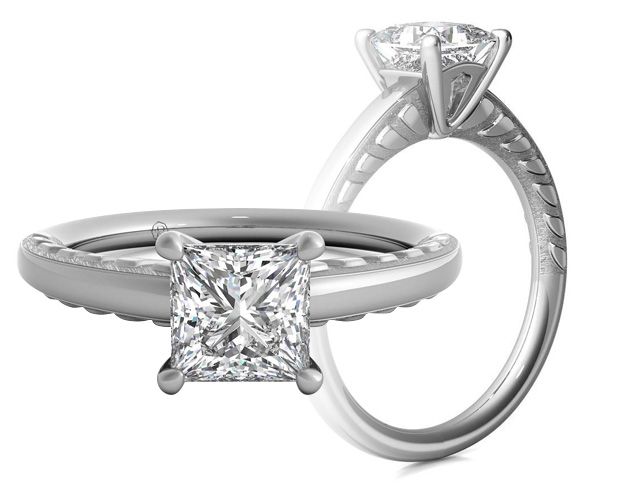
Because it contains pure gold, white gold has a naturally warm look. In order to lose the yellowish tint and achieve a whiter appearance, white gold is routinely coated with rhodium. Rhodium is a very rare metal belonging to the platinum group, and it has a shiny, silvery-white metallic color. With a hardness of 6 in the Mohs' scale, rhodium-plating protects white gold engagement rings from scratches.
The plating, however, will eventually wear off. So don't worry if you notice your engagement ring doesn't look as bright and shiny as it used to years ago. Your jewelry isn't turning yellow; it's simply the original warm white gold-tone coming out through the faded rhodium coat.
To preserve the look of your white gold jewelry, we recommend to re-plate it every 3-5 years. Ritani offers complimentary rhodium plating once a year.
If you want to clean your white gold engagement ring at home, avoid using harsh chemical cleaners and rough pads or fibers to prevent damaging the plating. Use warm water with some drops of dish soap to help remove any dirt buildups.
Contact a Ritani Customer Service Representative to arrange for your ring to be plated.
14kt vs. 18kt White Gold

Composition-wise, 14kt and 18kt only differ in their gold purity.
Which one is right for you? Take a look at their benefits:
14kt White Gold Pros:
- 14kt white gold is slightly cheaper than 18kt due to its lower pure gold content.
- For the same reason, natural 14kt white gold looks less warm than 18kt. Although with the rhodium-plating, you won’t notice the difference.
- Because it contains 42% alloy metals, 14kt white gold is somewhat harder and more scratch-resistant than 18kt white gold. Yet again, the protective rhodium layer makes them both very durable.
18kt White Gold Pros:
- Because it contains fewer alloy metals, 18kt white gold is the more hypoallergenic option of the two.
- Its higher gold content makes 18kt white gold less prone to oxidation, meaning it can look better for longer after the rhodium-plating wears off.
- Some shoppers prefer a higher gold purity, and 18kt white gold is more valuable.
As you can see, both alloys are a great option, and it all boils down to personal preference. Some jewelers recommend 14kt for more active lifestyles, but the hardness difference is not that substantial to offer a significant advantage over 18kt. A blow hard enough to scratch or dent an 18kt white gold engagement ring will probably also cause visible damage to a 14kt white gold engagement ring.
If you have nickel allergies, request our 18kt white gold nickel-free alloy available for any of our engagement ring settings for an additional $100 — contact customer service at 1-888-9RITANI or email care@ritani.com.
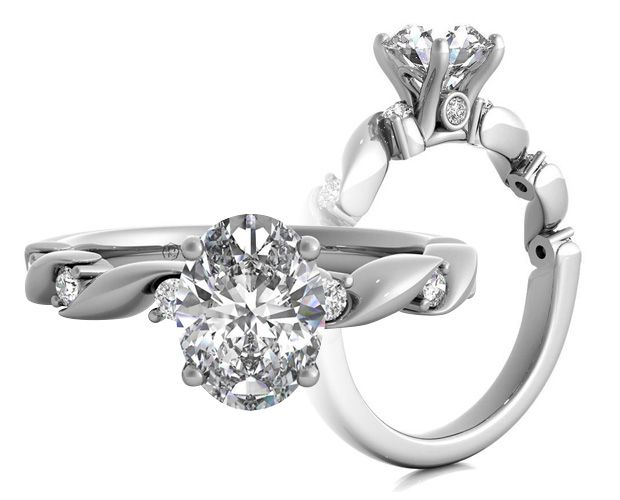
4 Reasons To Choose White Gold For Your Engagement Ring
- White gold suits all skin tones and looks stunning paired with other gold tones.
- Because of its shiny rhodium finish, white gold engagement rings really emphasize a diamond’s near-colorless (G-J) or colorless (D-F) tone.
- White gold is less expensive than platinum yet still precious, making it a great affordable alternative. Plus, the rhodium-plating gives white gold a beautiful cool-toned silvery-white color that looks almost like platinum.
-
18kt white gold or our nickel-free alternative is a great hypoallergenic option.
The main advantage of white gold over platinum is its price tag. By choosing a white gold engagement ring, you get the timeless, luxurious feel of platinum for less. But you do need to take care of re-plating every couple of years, and probably having it re-polish is a good idea too.
